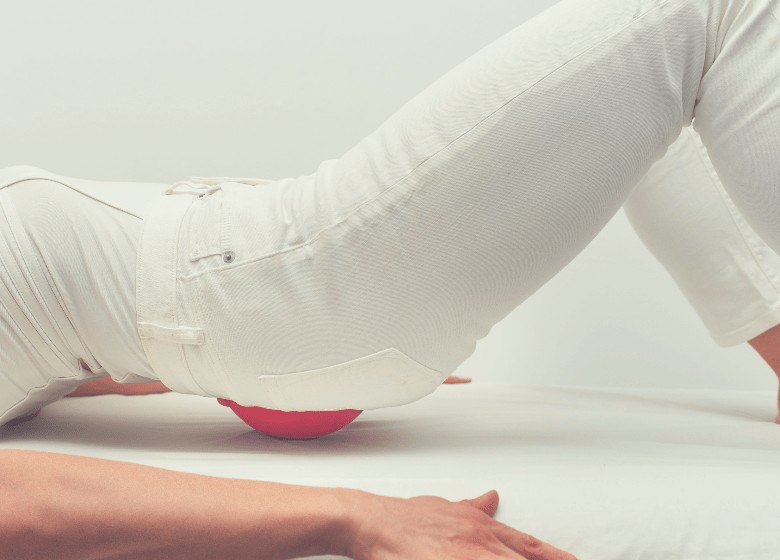Regardless if it’s after a long day at work on your feet or another tedious day in the office, back pain can haunt us wherever we go.
People who understand back pain know that there’s often a slippery slope of pain that leads people down a road of chronic suffering that seems unconquerable.
But what if there was a simple, non-invasive product that allowed for the majority of back pains to not only be reduced but eliminated and prevented in its entirety?
What if that item costs less than 100 dollars and allows for worry-free back maintenance? What if that device was so small and innocuous, it could even fit inside of the smallest studio apartment or even a recreational vehicle?
Enter the Pelvic Clock, one of the best ways possible to tackle acute and chronic back pains on the market.
What is the Pelvic Clock?
The Pelvic Clock is a portable exercise device that was created by an Olympic coach to help his athletes succeed and recover from their arduous workouts.
The Pelvic Clock is manufactured in the United States and focuses on being a lightweight but durable means of pelvic exercise and stretching.
There are five main components that factor into the design of the device:
- Stretching to increase levels of flexibility to improve hip mobility and the position of the lumbar spine.
- Strengthen the dormant abdominal muscles in order to stabilize the lumbar spine via sacroiliac joints.
- Realign prorated pelvises, rotated hips, and curved lumbar spines.
- Release tight piriformis muscles and tight hip flexors.
- Relieve lower back pain and chronic hip issues.
These will benefit all athletes in many fields of sport such as golf, tennis, baseball, cycling, running, weight lifting, and general strength training.
The Pelvic Clock is meant to aid with a wide variety of physical maladies that could be caused by the above activities and more such as:
- Uneven hips
- Twisted pelvis
- Tight hip flexors
- Swayback posture
- Spondylolysis and spondylolisthesis
- Sedentary lifestyle
- Sacroiliac joint dysfunctions
- Rotated pelvis
- Pregnancy back pain
- Piriformis syndrome
- Pelvic floor rehabilitation
- Lumbar spinal stenosis
- Lumbar lordosis
- Hip pain
- Lateral pelvic tilt
- Flatback syndrome
- Anterior pelvic tilt
How Does the Pelvic Clock Work?
As most people tend to favor one side of their bodies, this causes the other half of their muscles that go under-utilized to become less powerful and tighten up.
This causes a worsening body symmetry that is also amplified by the aging process that all humans go through.
The deterioration of posture leads to a poor spinal position far from the neutral ideal, and this abnormal pelvic tilt inevitably leads to pain.
Although no treatment plan could 100% guarantee that people will ever be totally pain-free, those who have investigated or undergone spinal surgery, injections, chiropractic adjustments, acupuncture, physical therapy, and more understand how expensive and time consuming these practices are.
The Pelvic Clock will prolong the effectiveness of preventative exercises and stretching and thereby allow the user to minimize the risks of potential relapses.
There is no other way, as nobody will ever be able to rebuild your muscles except for you.
The workouts of the Pelvic Clock are meant to reset the pelvis, spine, and hips in order to bring them back to neutral alignment over time.
Since every human body is unique, each person’s workout will need to include a variety of stretches, core stability exercises, and body alignment routines based around their individual levels of fitness and medical conditions.
The exercises are easy to learn and are adaptable to a variety of pain points, but as always, they will take time, practice, and patience to perfect the precision needed for the best results.
Each part of the pelvis is a pliable area of muscle, which is divided into three groups. The sacrum and hip bones are together thanks to the sacroiliac joints, 35 separate muscles, and four main ligaments.
When one core muscle contracts, the opposing muscle to it will stretch. That’s a lot of pulling and pushing going on!
Each exercise from the Pelvic Clock will focus on a highly specific group of muscles in order to strengthen and stretch each opposing fascia group at the same time.
The Pelvic Clock is best used by those who have pains that range between one and five on a scale from one to ten.
If the individual has pain that is severe or acute, then treatment by a physician for stabilization is recommended first before then using the Clock to further repair and maintain the progress so that relapse doesn’t happen.
Sciatica, which is a series of sharp pains going down the leg that feels like electric shocks, can be random and spontaneous.
Generally, sciatica is a sign of a worsening pain condition that needs to be seen by a physician for a professional diagnosis.
What Others Are Saying About the Pelvic Clock
Physical therapists are raving about the device. Many have commented that the Pelvic Clock is a fabulous example of how the body is based around such a simple element that is the circle.
Others have credited the Clock as a real game-changer in helping people conquer their lower back pain.
One commented that he’d never seen such an amazing device for strengthening the SI joint, releasing the muscles of the hips, and exercising the lower back.
Laymen users rave about how it helps with chronic pain. Many have been recommended the device by the American Council on Exercise in order to keep up with their physical therapy regimens at home in a safe and effective manner.
For those who have unstable pelvises, nothing is better than treating the root of the problem with daily use of the Pelvic Clock.
Pregnant women have also commented that it’s easy to use, especially late into the pregnancy.
Patients who cannot get out of bed are also able to use the Pelvic Clock, and they have commented on how they wanted to give them as gifts to their friends and family members who suffer from similar ailments.
Similar Products to the Pelvic clock
If you do not feel like the Pelvic Clock will be able to help you, here are a few other devices worth taking a look at to strengthen your core and pelvic area.
OPTP Pelvic Rocker Core Trainer
Sold as a balance tool for strength and stability, the OPTP Pelvic Rocker strengthens your pelvic floor and core stability.
The idea is to challenge your Dynamic stability by providing an exercise platform to be utilized for exercises such as V-sits, pelvic tilt, and more to encourage familiarization with your pelvis’ movement.
It allows you to engage deeper core muscles throughout your transverse abdominis to facilitate coordination of the inner and outer muscles for better Body awareness.
This is designed to be used for physical therapy purposes and core conditioning. However, users have also commented that it works great for being utilized as a mind-body connectivity device.
It’s made from professional-grade materials such as a slip-resistant base that allow it to function on most surfaces.
It also comes with an exercise manual that demonstrates all of the various exercises that could be performed on the device.
It comes with the ability to resist wear thanks to its patented, precision-forming backrest that allows for the ultimate pivot when aligning and exercising your hips.
The idea is to strengthen the pelvic floor while also making the tight muscles more limber over time. This will keep your body in better alignment throughout the day with less chronic problems as a result.
Preventative maintenance is worth one pound of cure in the case of the Pelvic Rocker Core Trainer.
Those who are looking for a more budget-conscious option when looking to address their lower back and hip pains would do well to give the OPTP Pelvic Rocker Core Trainer a look since it functions similarly to the Clock.
Lo-Bak TRAX Portable Spinal Traction Device
The Lo-Bak TRAX is designed around the concept of traction for relieving back pain. It is a 510K medical device, a testament to its effectiveness for many users.
Traction is all about allowing for pure decompression in the spine and thereby causing relief for the muscles and nerves that may have been tight throughout the day or night.
It was invented and patented by a practicing chiropractor who wanted to provide their clients with an effective, portable, economical solution to tackle back pain at home and on-the-go.
The Lo-Bak TRAX hooks around the top of the thighs, and the user utilizes the handles to decompress their spine while lying on their back.
The TRAX is Food and Drug Administration cleared for spinal diseases, joint diseases, herniated discs, muscle spasms, spinal stenosis, low back pain, sciatica, and more.
Since the divide is non-powered, there is no worry about replacing batteries endlessly. This saves the user money over time.
Also, the device has no moving parts, which means that it is more robust and will withstand user abuse more.
As the TRAX is so easy to use, users will find themselves using it more often and without worry that they’re doing it wrong.
This is one of the most budget-friendly options offered, but users need to take care that it functions in a fundamentally different way than the Clock.
The Lo-Bak TRAX won’t be able to provide you the same levels of exercise and flexibility because it focuses on being a traction device first and foremost.
Those who suffer from the ailments listed above and want to take advantage of the 510K-certified traction offered by the Lo-Bak TRAX would possibly benefit from giving it a shot.
The Back Pedal
The Back Pedal is designed around realigning, strengthening, and stabilizing the pelvis with the promise of fast results in its easy to use, lightweight, and ergonomic package.
Designed by physical therapist Dr. Christopher Beddoe, the underlying fundamentals of the device is based around traction.
This is the same traction that other items used to decompress the spine and provide relief for tight muscles and stressed nerves that have seen a lot of abuse day in and day out. However, there are some key differences here.
The Back Pedal is more expensive than most other traction devices that are used while laying horizontally, and it’s also larger and heavier.
The advantages to The Back Pedal are several; it is made with padding that wraps around your legs, so it is easier to use by populations such as the elderly who might have issues with hard steel.
The gauge of the metal is thicker than most devices, so it can be used by a border range of patients without succumbing to any bending.
The Back Pedal also comes with a 180-day manufacturer guarantee of satisfaction, so users don’t need to worry if it doesn’t work for their specific case of back pain.
The Back Pedal provides you strength and re-alignment where you need it the most: your pelvis.
Anterior and posterior pelvic rotation issues are addressed by aligning the spine to provide hip and back relief.
Hip extension muscles are stretched without being made to suffer so that chronic tightness is given way to relaxation.
Users of traction devices that are looking for something more robust and also have concerns around padding or ergonomics might want to give The Back Pedal a test drive.
Final Thoughts
In today’s modern world, chronic imbalances that inevitably lead to pain are becoming more and more common.
Since we are spending more and more time sitting in front of computers and less and less time moving around, muscles will naturally tighten and atrophy.
The Pelvic Clock is ideal for keeping up with the body and providing muscles that many might not even realize even exist a chance to finally stretch and relax.
When it comes down to it, back health is one of the most important factors to consider for a pain-free life over the long term.
Therefore, it’s never too early or too late to look into non-invasive means of preventative care such as the Pelvic Clock.










